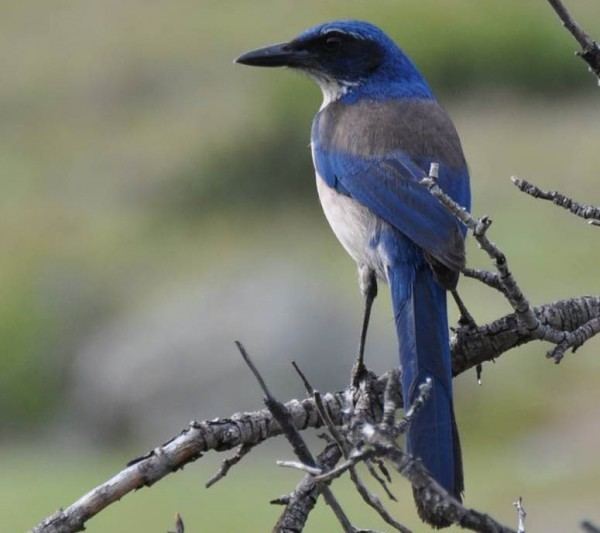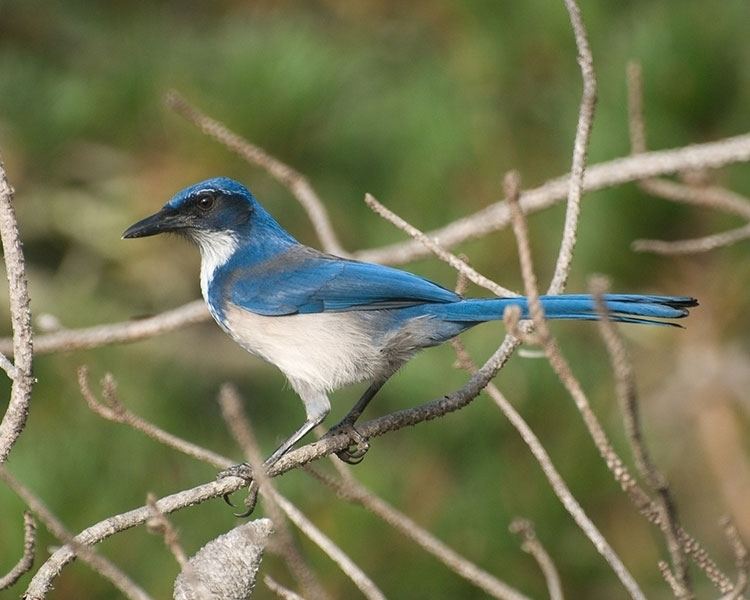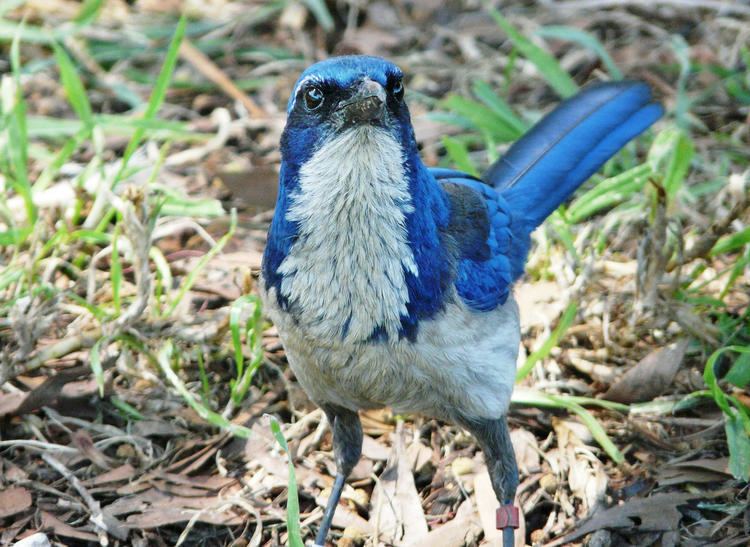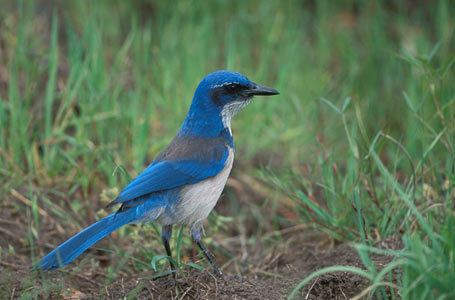Phylum Chordata Rank Species | Higher classification Aphelocoma Order Passerine | |
 | ||
Similar Bird, Aphelocoma, California scrub jay, Unicolored jay, Mexican jay | ||
Sc the island scrub jay the kestrel
The island scrub jay (Aphelocoma insularis) also island jay or Santa Cruz jay is a bird in the scrub jay genus, Aphelocoma, which is endemic to Santa Cruz Island off the coast of Southern California. Of the over 500 breeding bird species in the continental U.S. and Canada, it is the only insular endemic landbird species. The island scrub jay (ISSJ) is closely related to the California scrub jay – the coastal population found on the adjacent mainland – but differs in being larger, more brightly colored, and having a markedly stouter bill. The large bill size is related to its diet, incorporating the thick-shelled acorns of the island oak (Quercus tomentella). They will bury, or cache, the acorns in the fall and may eat them months later. They also eat insects, spiders, snakes, lizards, mice and other birds' eggs and nestlings.
Contents

Taxonomy

The island scrub jay was first described by American ornithologist Henry Wetherbee Henshaw in 1886 and an archaeological specimen at site SCRI-192 dating from 1780's-1812 on Santa Cruz Island is the earliest evidence of the bird in the historic period. This bird is a member of the crow family, and is one of a group of closely related North American species named as scrub jays. These were formerly often considered as a single species, the scrub jay, Aphelocoma coerulesens, with five subspecies, but full species status is now normally given to the Florida scrub jay, A. coerulesens, the island scrub jay, the California scrub jay, A. californica, and Woodhouse's scrub jay, A. woodhouseii. The relationships within the genus are not fully resolved. and most taxonomists already split it into Californian scrub jay, A. californica, and Woodhouse's scrub jay, A. woodhouseii. The DNA studies also indicate that the island and coastal forms have long been isolated from their relatives inland.

The scrub jays seem to be incapable of crossing significant bodies of water. Reliable historical observer records for ISSJ in addition to Santa Cruz Island include only a single 1892 account on neighboring Santa Rosa Island, only about 10 km (6 mi) away. There are no definite occurrences of a scrub jay on any other of the Channel Islands, or on the Coronado Islands, only 13 km (8 mi) from the mainland. The historic observation on Santa Rosa Island is supported by an archaeological record of a single ISSJ femur from a Late Pleistocene-Holocene site (SRI-V-3).

It has been suggested that the ancestor of the present population was storm-borne or carried on driftwood to Santa Cruz, or that the colonization occurred during a period of glaciation 70,000 to 10,000 years ago, when sea levels were much lower and the channel between the coast and the islands was correspondingly narrower. More recent DNA studies show that, although other island endemics such as the island fox and the Santa Cruz mouse may have diverged from their mainland relatives around 10,000 years ago, the scrub jays separated in a period of glaciation around 151,000 years ago. Up to about 11,000 years ago, the four northern Channel Islands were one large island, so the ancestral island scrub jay must have been present on all four islands initially, but became extinct on Santa Rosa, San Miguel and Anacapa after they were separated by rising sea levels.
Distribution and habitat

The island scrub jay is found only on Santa Cruz Island, the largest of California's Channel Islands with an area of 250 km2 (96 mi2). The island is a nature reserve, the eastern 24% being administered by National Park Service as the part of the Channel Islands National Park and the rest of the island by the Nature Conservancy.

The island scrub jay is not known to have occurred anywhere besides Santa Cruz and Santa Rosa Islands historically, and no fossil remains have been found so far on the other Channel islands (Curry & Delaney 2002).
Females lay 3 to 5 eggs. Incubation lasts approximately 20 days. These jays are monogamous and, unlike some other jays, are not cooperative breeders. Both sexes build a nest 1 m (3 ft) to 8 m (26 ft) above the ground.
The genus name, Aphelocoma, comes from the Latinized Ancient Greek apheles- (from ἀφελής-) "simple" + Latin coma (from Greek kome κόμη) "hair", in reference to the lack of striped or banded feathers in this genus, compared to other jays. The species name, insularis, comes from the Latin for "from an island".
Conservation status
The island scrub jay is classed as vulnerable on the IUCN Red List because its very small range makes it potentially vulnerable to a catastrophic incident such as Avian malaria or a large fire that destroys their habitat. The apparently stable population of at least 9,000 individuals makes this bird common on Santa Cruz, however, the establishment of West Nile Virus (WNV) in southern California in 2003 may pose a threat if it crosses to Santa Cruz Island from the mainland. Corvids are especially vulnerable to WNV. In addition, the increased occurrence of wildfires in southern California may portend a catastrophic fire there. Shrub cover has increased since the removal of Santa Cruz sheep (1980–91) and feral pigs (2005–07) from Santa Cruz Island, which may increase the fire risk. Active conservation is limited to controlling the numbers of introduced sheep and pigs, which have caused habitat degradation in the past. In fact, overgrazing by non-native ungulates may have caused extirpation of ISSJ on Santa Rosa Island. Re-establishing a second population of ISSJ on Santa Rosa Island may accelerate the restoration of native plant and tree species because of the scatter-hoarding seed caching behavior of Aphelocoma species.
The Chumash people who were the original inhabitants of the northern Channel Islands may have eaten the local scrub jay, or used its feathers for decoration, since they are known to have made feather bands including jay feathers on the Californian mainland. Human activities may have contributed to the presumed extinction of the island scrub jay from the smaller islands.
